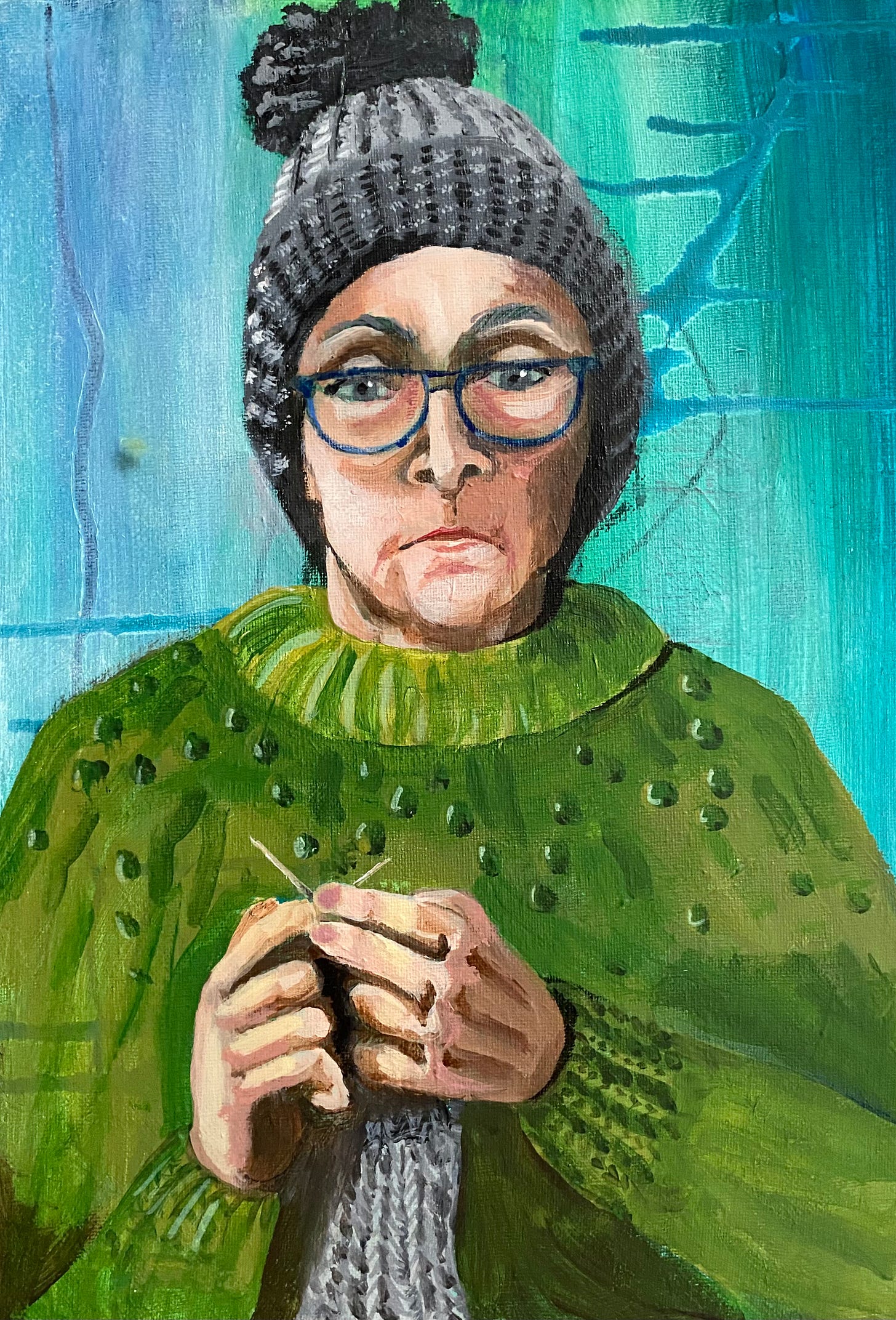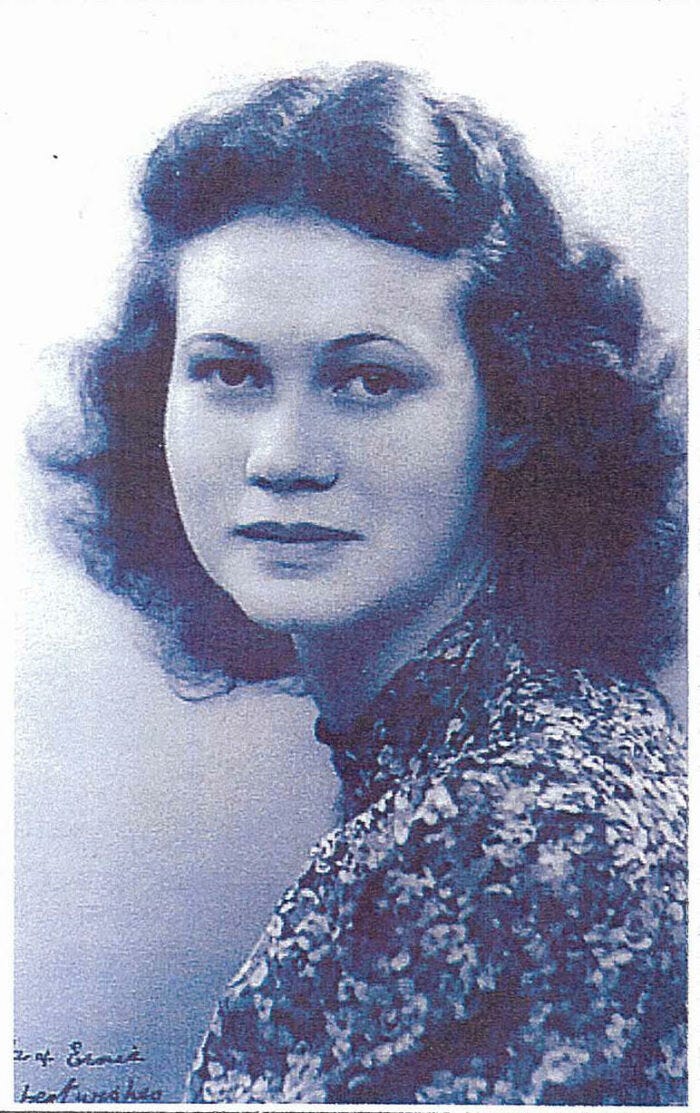Last week, after I wrote about the fictional Revolutionary Madame Defarge, working coded stitches into her knitting, I received some comments and emails that prompted me to do some more research.
I was aware of stories of women using knitting as a means of recording information during the World Wars and I was keen to find out more. However, after some initial digging around on the internet I was beginning to think it was something of an urban myth. There are no shortage of sites that tell of a particular elderly Belgian woman, or more specifically a grandmother, sitting by her window knitting whilst watching trains chugging past her home during the First World War. Each train passing was marked by a unique stitch, either a knit stitch or a ‘hole’ to identify the type of train. The knitting was then used as a way for the Belgian resistance to pass on messages to fellow spies. It wasn’t long before I started to see a pattern in the writing. The story was told in the same format, with no attempt to hide the fact that not only was each blog or website repeating the identical tale they weren’t even changing the wording. It was a ‘copy and paste’ job over and over again. Plagiarism is alive and well and try as I might, I couldn’t locate the original source of the information online.
However in her book ‘This Golden Fleece’ (which I can recommend if you are interested in the history of knitting in the British Isles), Esther Rutter claims there are substantiated stories of coded knitted during the wars. In 2009, the BBC made a series of programmes to celebrate the centenary of the British Secret Intelligence Service. In one programme they described how MI6 worked with members of the Belgian Resistance during the 1914 occupation of Belgium by Germany. They sought out older women who lived near railway yards and with clear views of the yards from their homes. These women would knit and record the movements of trains, knitting a knit stitch for a troop train and a purl stitch for an artillery train. So maybe there is some truth to the stories, after all knitting is the perfect pastime whilst keeping watch and an ideal way of hiding codes.
Those of us who knit know that pretty much all knitting is a variation of just two stitches, a simple binary system of knit and purl. The smooth v of a knit stitch contrasts beautifully with the ‘bump’ of a purl stitch which allowed binary coded messages to be hidden in plain sight and passed right under the noses of the enemy. During the Second World War the US Office of censorship even banned the posting of knitting patterns abroad because of the possibility of the instructions containing encoded military information.
Steganography, the practice of hiding information in plain sight is nothing new and the earliest recorded incident dates back to 440 BCE in Ancient Greece. A slave’s head would be shaved, and a message would be tattooed onto his scalp. His hair was allowed to grow back, and he would be sent to the intended recipient who would shave the poor guy’s head again and the message would be read.
“Don’t you dare unravel my knitting….”
There was also speculation, which may well have been exaggerated, that the Germans used entire sweaters as a form of knitted coded message. The yarn used would be tied with a specific configuration of spaced knots that represented morse code. When the sweaters were unravelled the sequence of knots could be deciphered. Personally as a knitter I find this particular story a little far-fetched. I mean… all that work unravelled for a single message!
One of the most fascinating and definitely true stories of a knitting spy is that of the Second World War agent Phyllis Latour Doyle, who whilst she didn’t actually knit coded messages used knitting as a perfect cover for her clandestine activities.
Knitting was actively encouraged during wartime and literally millions of people throughout the British Isles, Europe and beyond would knit socks, mittens and balaclavas for the troops fighting abroad. But as well as supporting the war effort and lifting morale, knitting was such a commonly seen activity that it seemed perfectly innocent, after all everyone was doing it… men, women and even the Royal family.
The Queen Mother with Princesses Margaret and Elizabeth, knitting during WWII
Phyllis Latour was born in South Africa in 1921, her father a French doctor and her mother a British citizen. Her father died when she was just a baby and although her mother remarried she too died, killed in a car crash, while Phyllis was still a child. The young, orphaned Phyllis went to live with her father’s family, eventually moving to Europe in 1939 to complete her education. In 1941 she became a flight mechanic in the Women’s Auxiliary Air Force but by 1943 she had been spotted by recruiters from the British Special Operations Executive who had seen her potential. She underwent rigorous training learning unarmed combat and how to use a submachine gun. She could strip down a wireless set and was able to operate morse code. She reports being taught burglary skills such as lock picking and how to scale walls and fences by an ex con, ‘Killer’ Green.
Phyllis Latour Doyle as a young woman
By May 1944, aged only 23, she was parachuted into German occupied France where she was to gather information on the movement of German troops in preparation for D Day. She masqueraded as a French teenager, touring the countryside on a bicycle selling soap to German soldiers, enabling her to track their movements. Using hidden radio sets she sent coded messages back to London, often having only half an hour to send a message and dismantle the radio before moving on to avoid detection. Despite this she was stopped and searched on several occasions but was never detected because her knitting proved to be a perfect cover. In an interview given in 2009 she said:
“I always carried knitting because my codes were on a piece of silk. I had about 2000 I could use. When I used a code I would mark it with a pinprick to indicate it had gone. I wrapped the piece of silk around my knitting needle and put it in a flat shoelace which I used to tie my hair up.”
During this time she sent back 135 coded messages using her knitting to conceal her true activities
After the war Phyllis married an Australian engineer, Patrick Doyle and she lived a quiet life with him and their four children in Kenya, Fiji and Australia. It sounds quite exciting to me but perhaps compared to being parachuted into the occupied French countryside and living rough for several months all that travelling and living in different countries felt ordinary and quiet to this adventurous young woman. They divorced in the 1970s and Phyllis eventually settled in New Zealand. But during all this time she never spoke of what she had done during the war until in the 1990s her eldest son read something online about his mother. He confronted her and it was only then that she told her children about her past as a spy. They insisted that she send off for her medals which she had never received and eventually she received them in a formal presentation, achieving France’s highest award The Chevalier of the Legion of Honour in 2014.
Phyllis Latour Doyle with her medals in 2014
This remarkable woman, Phyllis Latour Doyle died in 2023 aged 102.
Which all goes to show that maybe Dickens was ahead of his time writing about a revolutionary figure using knitting for clandestine activities because the idea of hiding coded messages into knitting captures our imagination and remains perennially fascinating. And those of us who knit and are able to read the codes in our patterns, translating them into finished garments obviously have a special skill… Just saying!
And while on the subject of hidden messages, embroidery too has often been used as a means of an act of resistance or protest and a way of hiding subversive messages, dating back as far as Mary Queen of Scots. But that is a story for another day.










So many of these spy stories probably went largely untold. Delighted Phyllis was eventually persuaded to ´tell’. My husband already knew the twice-shaved story of the poor slave. Thank you for a great read!
Really fascinating. Thank you for researching.